Who Murdered Henry Han and His Family?
Prosecutors Present Evidence at the Preliminary Hearing
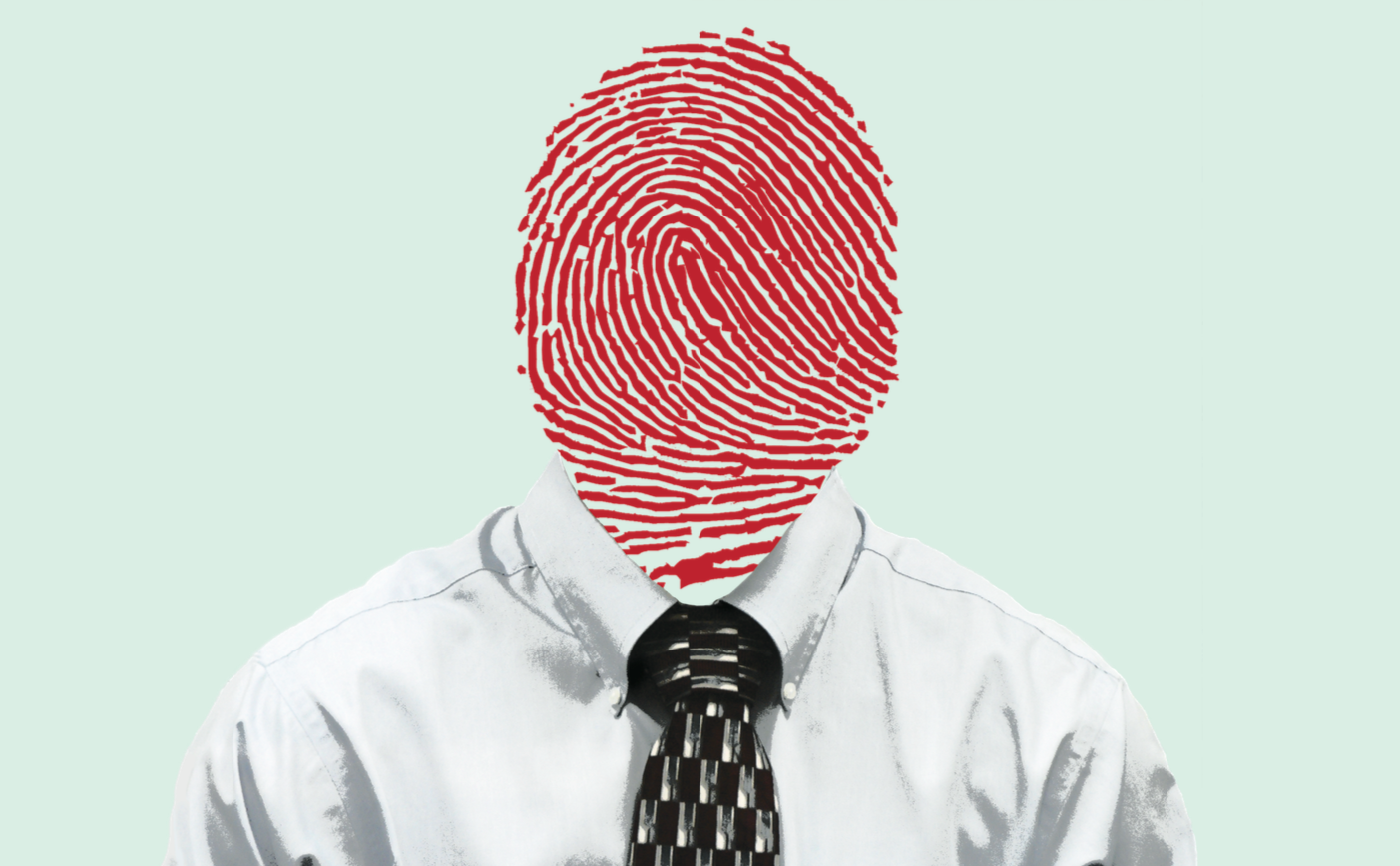
There was no shortage of harrowing images exploding off the walls in Judge Brian Hill’s courtroom during last week’s preliminary hearing of Pierre Haobsh — a 27-year-old cipher — accused of killing Santa Barbara’s highly regarded Chinese herbalist Dr. Henry Han; his wife, Jennie; and their young daughter, Emily, in March 2016 at their Goleta home.
Most upsetting were the autopsy photographs of Emily showing the entrance wounds where eight 22-caliber bullets penetrated her skull. The largest was in the middle of her forehead. Radiating out from each entrance wound were thin, wooden probe sticks about eight inches long, designed to demonstrate the path taken by the bullets. At the time of her death, Emily was just a few days shy of celebrating her sixth birthday.
Haobsh — clad in an orange jail jumpsuit, hands and ankles cuffed, a chain shackled around his waist — turned his head away from the images. District Attorney Joyce Dudley, who attended most of the three-day hearing, also seemed to have a hard time watching.
Ultimately, it will be up to Dudley to decide if the prosecutors, Hilary Dozer and Benjamin Ladinig, should push for the death penalty. If she chooses to do so, it will mark the first time since her 2010 election that Dudley would seek the ultimate punishment. It would also be the first death penalty deliberation in Santa Barbara County since last November, when California voted to speed up the rate at which executions are carried out and rejected another statewide ballot measure to abolish capital punishment outright. Should any subsequent Santa Barbara jury decide to send Haobsh to death row, those photos will have, no doubt, loomed large in their deliberations.
The Case for the Prosecution
Last week’s preliminary hearing in Courtroom Number 2 marked the first time since the Han bodies were discovered that Santa Barbarans could learn — in any detail — the grisly facts surrounding the crime. For prosecutors and defense attorneys, these three days functioned as a macabre dress rehearsal. It’s where prosecutors needed to demonstrate they’d gathered enough evidence to require Haobsh to stand trial. At issue was not guilt or innocence; there was no jury of peers. Instead, only the prosecution calls witnesses. The rules governing admissibility of evidence are greatly relaxed; hearsay, for example, is allowed. The defense attorneys — in this case Christine Voss and Mindi Boulet, seasoned veterans with the Public Defender’s Office — are just allowed to cross-examine witnesses for inconsistencies or other weaknesses. Usually, law enforcement officers relay what they were told by actual witnesses. This is only the first step in the criminal proceeding. Haobsh has pleaded not guilty, and his defense lawyers have yet to begin their task of establishing reasonable doubt that Haobsh committed these murders. It’s really the prosecution’s show. And last week, prosecutors Ladinig — smart, tough, cocky, and respected by the defense bar — and Dozer — a high-profile veteran coming out of retirement to work an especially high-profile case — put on an exceptionally powerful show.
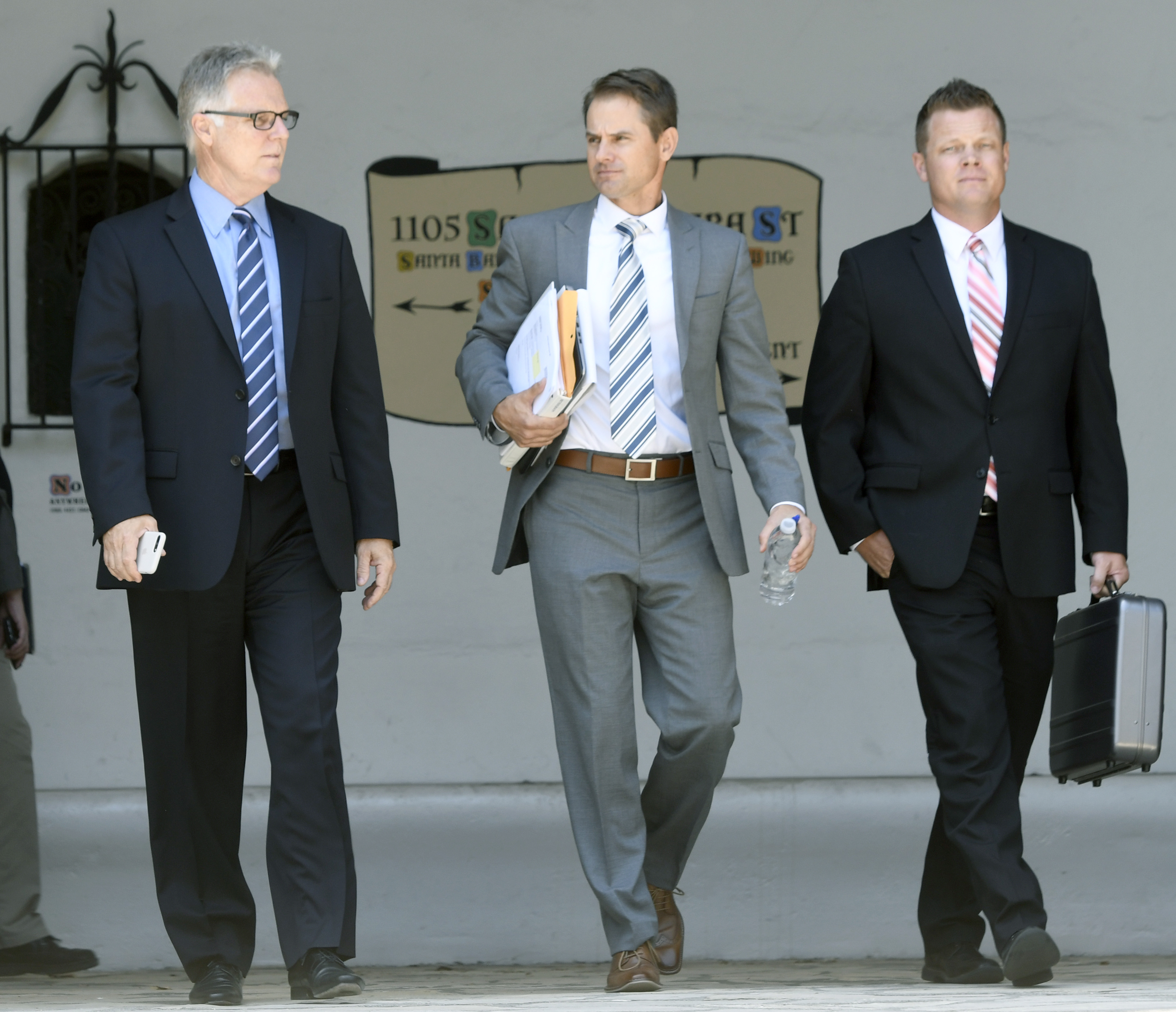
Certainly, the photographs — simultaneously horrific, clinical, and mundane — were compelling. There were countless images of the Han bodies, enshrouded in clear plastic sheeting, trussed up with coils of blue duct tape, and dumped on the garage floor like old, worn-out rugs.
The Mystery of Dr. Han
But even after these three days of preliminary hearings, many questions central to the case remain unanswered. How did Henry Han, a beloved practitioner of traditional Chinese medicine, admired by so many in Santa Barbara for his brilliance and kindness, come to be associated with Haobsh — a self-described entrepreneur, chemist, and technical wizard — in the first place? So murky is Haobsh’s background that few who testified — and certainly not the judge — could come to terms with how to even pronounce his name properly. The variations were infinite. One Sheriff’s deputy involved in his arrest gave up altogether and referred to the defendant only as “Mister Pierre.”
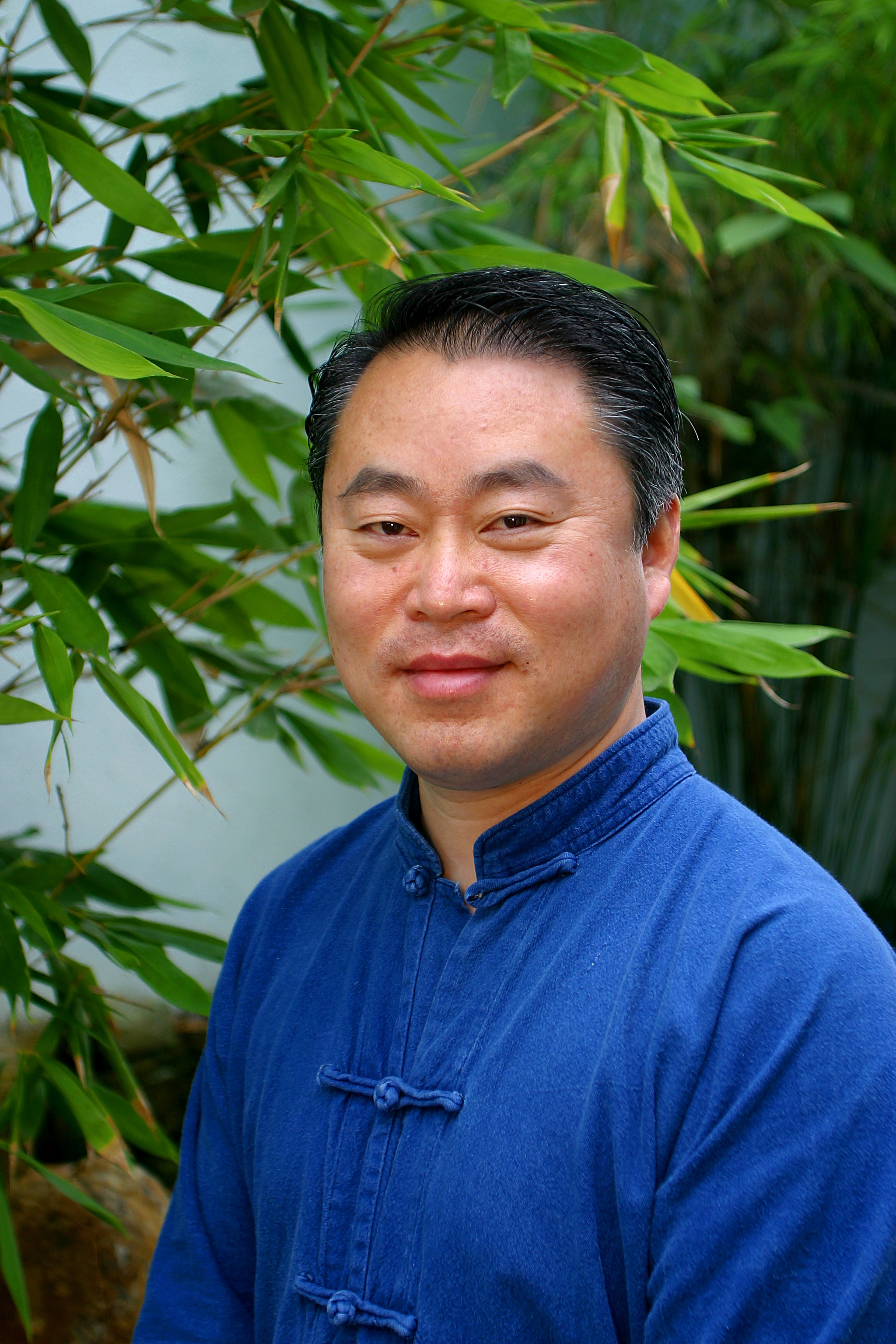
Aside from the accused killer, questions abound about the shadowy cast of characters — an intriguing collection of pot growers, porn mongers, scientists, doctors, and businesspeople — looming not so peripherally around many business deals that apparently involved both Han and Haobsh.
And finally, what about the deals themselves — many of which are undeniably high-flying, outlandish, and potentially dangerous? Documents show that one project sought to combine traditional Chinese herbal techniques with cannabis oils to create a cure for cancer. Another hoped to develop a new line of facial creams that relied on cutting-edge stem-cell technology. And most recently, it turned out, there was a brand-new enterprise to create an innovative energy technology. Were such enterprises legitimate? Was the science real? That is yet to be explained.
And then there was the operatic trajectory of Henry Han’s 57 years of life itself. Born and raised in communist China, Han’s parents were both doctors trained in Western-style medicine. His father (a dermatologist) and his mother (an oncologist) had been consigned to labor camps during Mao Tse-tung’s notorious Cultural Revolution. As an adolescent, Han was forced to fend for himself. Eventually, he managed to graduate from medical school in China and moved to the United States to further his medical training, all underwritten by the Chinese government. After the Tiananmen Square uprisi
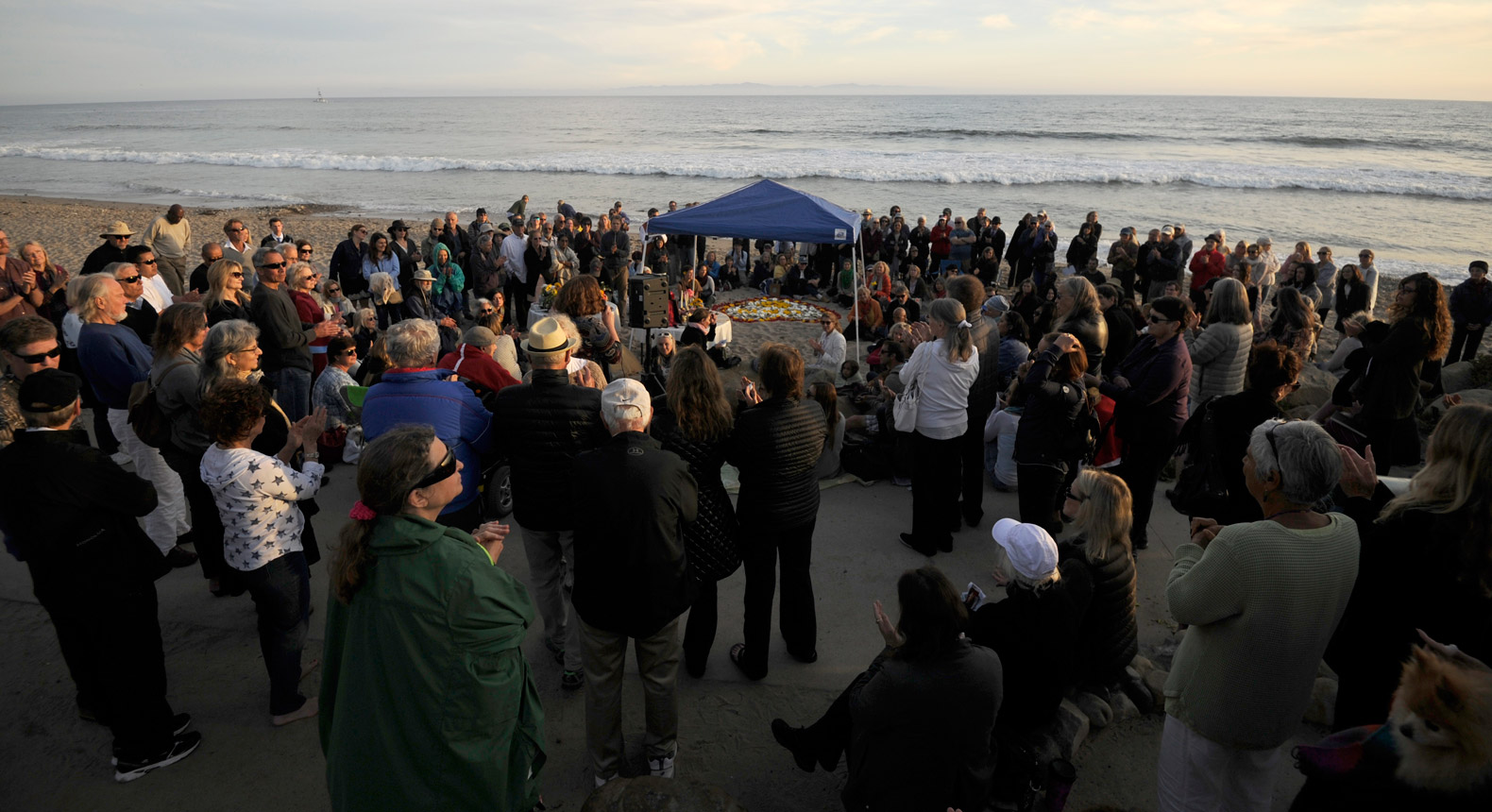
ng in the 1980s, however, Han broke with the government. It, likewise, reportedly broke with him, cutting off his means of support.
Han moved to Santa Barbara about 30 years ago and quickly established himself as a genuinely gifted healer. In that time, Han would see about 15 patients a day, four days a week, no matter what. He had a patient list of roughly 13,000 people. “Every one of us has exactly the same story,” said one diabetic whom Han treated for nearly 20 years. “I tried everything. Nothing worked. I found Henry. I was good after that.”
With so many elements swirling so richly throughout Han’s life, it’s little wonder his murder — and the ruthless brutality with which his whole family was executed — would become enshrouded in the thick smoke of conspiratorial curiosity.
Following the Trail of Evidence
In recent years, prosecutors have bemoaned a phenomenon they refer to as “the CSI effect.” By that, they mean jurors have become so spoiled by the impeccability of evidence presented on television crime shows that they expect the same unreasonably high standards in real-life cases. In the Haobsh investigation, however, that does not seem to be a problem. If anything, the prosecution’s mountain of evidence seems too good to be true.
For starters, there’s the confession Haobsh reportedly made to an acquaintance, Thomas J. Direda of Thousand Oaks, a shady but important potential witness who emerged from the back-and-forth of court testimony as someone very much involved in the porn industry and the marijuana trade. According to Direda, Haobsh texted him at 9:30 a.m. on March 23, the day the Han bodies were discovered, urgently asking for help. An hour later, Haobsh showed up at Direda’s residence, which he shared with his mother, telling Direda that he’d shot Han, his wife, and his daughter. “Mr. Haobsh told him he killed them for the $20 million that the individual had in his bank account,” Detective Jeffrey McDonald testified. Other testimony revealed Han’s bank accounts contained much less than a million dollars. According to various law enforcement witnesses, Direda either laughed off Haobsh’s confession as a joke or worried that he, or his mother, would be next. In either case, he didn’t notify law enforcement of Haobsh’s visit until his mother told him of news reports detailing Haobsh’s arrest.
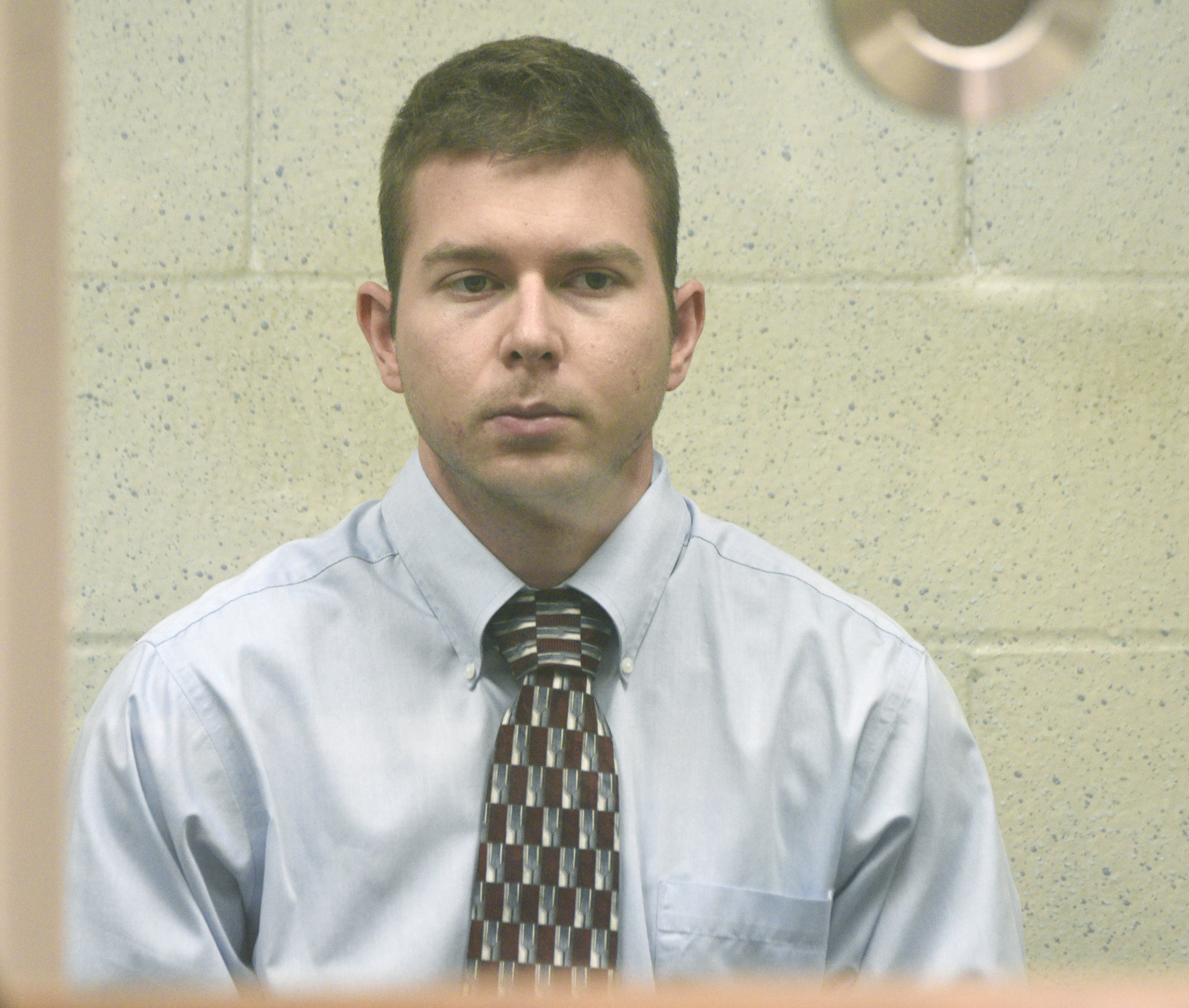
From Direda’s home, the trail leads to Tarzana, where Haobsh rented a 24-foot moving truck with a pneumatic lift and 12 moving blankets. At 4:57 p.m., Haobsh texted Direda, “Want to come to Vegas? I’ll pay.” Three hours later, Haobsh had just pulled into the driveway of Han’s seven-acre home and discovered the place crawling with law enforcement. “Yep. Am screwed,” he texted Direda. “They just found everything. My life’s over.”
Sheriff’s deputies had first arrived at the Han house at 5:20 p.m. on March 23, responding to a suspicious-circumstances welfare check reported by Donald Goldberg. A longtime friend and business associate of Dr. Han’s, Goldberg had eaten dinner with Han the night before and had scheduled a business meeting for the next day. When Han failed to show up, Goldberg tried to contact him and eventually called the Sheriff’s Office. When deputies got to Han’s home, Goldberg was there waiting.
Later, when the three bodies were discovered, it was Goldberg who suggested that investigators look into another business partner he called “Pierre” with whom, he said, Han had had a falling out. Searching the crime scene, detectives found a Trader Joe’s shopping bag that contained a business partnership document for Obsidian Teradyne LLC, signed and dated by Han and Haobsh one day earlier on March 22. With this information, detectives soon discovered that a 2013 red Lexus was registered to Haobsh, got the license plate number, and secured a photograph of the suspect. When investigators failed to find Dr. and Jennie Han’s cell phones at the crime scene, they quickly activated the emergency ping devices, which showed the phones were moving south. By that time, they had also discovered that Haobsh and his father, Frederick Smith (who changed his surname from Haobsh), shared a small apartment in Oceanside, a San Diego suburb, where a team of deputies was dispatched to stake out the residence.
Also at the Han home, detectives found the store wrapping for the plastic sheeting in which the bodies had been swaddled. Recognizing it as an exclusive Home Depot brand, they contacted the branch in Oceanside and quickly determined that Haobsh had purchased the sheeting and duct tape — among other things — there on March 20. In short order, they secured not only the receipt but also videotape footage from the store security cameras showing Haobsh pushing his shopping cart to the Home Depot cash register and making the purchase. Also included on the bill was copper tubing, solder, a soldering iron, and the equipment needed to fashion a gun silencer, also known as a suppressor.
Just after midnight on the March 25, Santa Barbara deputies on stake-out duty spotted Haobsh’s father leaving the apartment and followed him to a Walmart parking lot, where he met up with his son, still driving his red Lexus. Both trunks were popped, and the elder Haobsh hurriedly transferred a black duffle bag from his car to his son’s. Then they quickly got back in their cars, and both drove to an ARCO gas station and mini-market. There, Haobsh and his father were taken into custody at gunpoint but without incident. His father was later released without charge.
A search of Haobsh’s car turned up 22-caliber spent shell casings and the Hans’ cell phones wrapped in aluminum foil in an apparent attempt to thwart tracking, as well as Jennie Han’s gold-and-diamond Rolex watch and Henry Han’s wallet. In the trunk — sitting on the spare tire — deputies found a 22-caliber Ruger handgun, a copper suppressor, a Glock 9-millimeter handgun, and ammo for both. They found a receipt dated March 19 from a gun shop in Tempe, Arizona, where Haobsh had recently lived. Arizona allows same-day purchase of handguns, and Haobsh paid $1,500 in cash. He’d asked about getting a good defensive weapon and about guns with the threading needed to attach a suppressor. All these transactions were recorded on the gun shop’s security cameras.
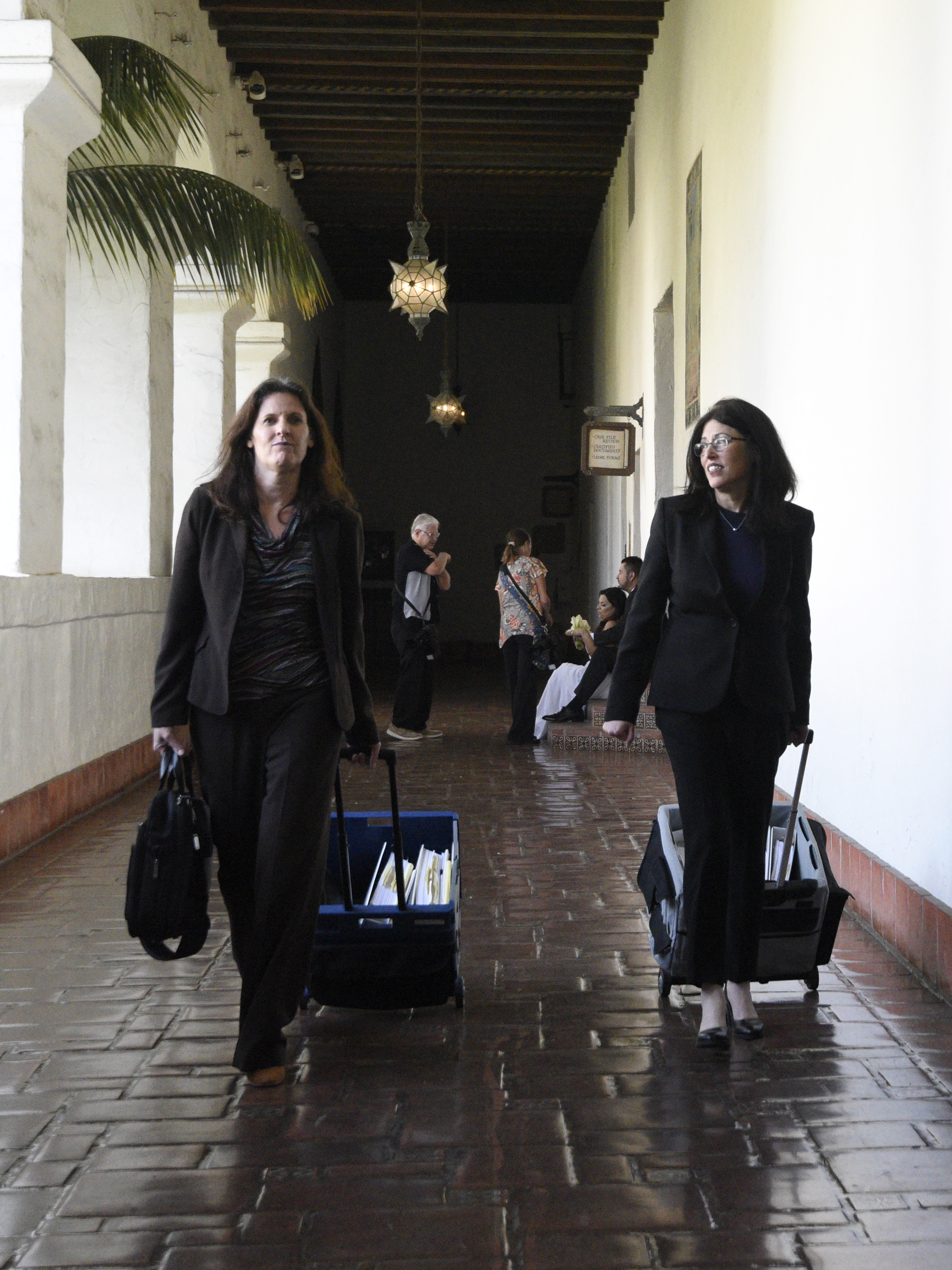
When Jennie Han’s body was removed from her plastic shroud, three 22-caliber spent shell casings fell out. Subsequent testing conducted by the Department of Justice determined those shells had been fired by the same Ruger found in Haobsh’s car. County forensic pathologist Manny Montez testified that the shells were consistent with the 14 small, caliber-sized entry wounds on the bodies. Some defense attorneys have complained that Montez uses nonclinical, overly colorful language on the stand. When he described the murders as a “a classic execution-style” shooting, defense attorney Voss most certainly agreed.
There were 10 sets of prints on the plastic sheet containing Emily Han that matched with Haobsh and five on the one containing Jennie Han’s body. No Haobsh prints were found on Dr. Han’s sheeting.
Prosecutors also documented texts, calls, and internet searches that Haobsh conducted from his personal smartphone. For example, Haobsh had texted Henry Han days before the killing, boasting of his fabulous wealth, his Lamborghini, and his private jet. “I am basically a billionaire post taxes and at some point you’ll want to consider using me.” Haobsh, according to testimony, had been a frequent visitor to the Han residence over the years and may have spent the night there when the Hans were shot. Haobsh had taken a screenshot of Han’s personal banking page — showing user ID names, social security number, and account number. According to prosecutor Ladinig, a search of Han’s bank records indicates that $72,000 had been transferred from Han’s savings account to his checking account at the time of his death and that Haobsh had sought to transfer those funds to his own account. Han’s bank’s fraud-protection system blocked that transfer, but not another one for $5,000.
Lastly, Ladinig said that the number of internet searches conducted by Haobsh after the killing strongly suggested someone intent on avoiding detection. Such searches included how to disable GPS tracking, how to cross into Mexico, how long fingerprints stay on plastic, and how long it takes to get results for a fingerprint test. One search was titled, “My fingerprints at scene of crime don’t prove anything.” On March 22, the day before the Han bodies were found, Haobsh reportedly accessed YouTube instruction on how to fabricate a handgun suppressor.
Prosecutors and investigators seem to have displayed little curiosity about the business and personal enterprises that brought Pierre Haobsh into contact with Henry Han. About Haobsh little is known. He reportedly grew up in the Midwest. His father, Frederick Smith, according to journalist Alan Friedman in his book Spider’s Web, was a Jordanian-born U.S. citizen hired by the CIA in the late 1980s and early ’90s to meet with Saddam Hussein’s weapons-procurement officers. At the time, the United States was supporting Iraq at the expense of Iran and eager to sell weapons to Hussein. When Hussein invaded Kuwait in 1990 — thus precipitating the Desert Storm invasion — this policy fell quickly out of favor. Haobsh’s sister, a blogger and internet media personality, attended Cate School and was married in a reality TV event held at the Montecito Country Club. And despite Haobsh’s bragging about his great wealth, last week’s hearing indicated he lived a hand-to-mouth existence, bouncing checks for insufficient funds and living with his father, with whom he had a joint bank account, in a modest rental unit.
Haobsh was one of several principals listed in a business plan written up for an entity known as Molecular Scientific LLC. In the prospectus, he was described as a chemist and manufacturing specialist. Also listed were Henry Han as herbalist and clinician; Goldberg, the Goleta businessperson who alerted Sheriff’s deputies that Han was missing; and two scientists, Kang Hsu and Juliana Barber, who listed degrees from Harvard and UCLA, respectively. Molecular Scientific had two main enterprises in mind: stem-cell skin cream and a cannabinoid-based cure for cancer. Cannibinoids are compounds, also known as CBDs, found in hemp and marijuana that are said to have vast untapped healing properties. They do not, however, get the user high and are not approved by the Federal Drug Administration for cancer treatments.
It was well known that Han was researching the use of pot oils to fight cancer. Han, according to some in Santa Barbara’s cancer community, believed he was on the brink of a major breakthrough. He was reportedly importing hemp from China and having it distilled into oils in Burma. During last week’s hearing, Haobsh’s defense attorneys Voss and Boulet repeatedly sought to suggest Han was working with pot obtained by Direda, to whom Haobsh had reportedly confessed. Prosecutors objected to most such questions — challenging their relevance — and Judge Hill sided with them. Even so, it became clear that Santa Barbara investigators believed Direda was involved in some way with the marijuana business. They also acknowledged that Direda and Goldman were associates in some fashion and that Direda knew other principals in Molecular Scientific LLC. Detective McDonald testified that Direda told him Dr. Kang Hsu was worried that “a contract” might be taken out against him, too, and that he sought ways to buy his way out.

… Han was researching the use of pot oils to fight cancer. … [many] believed he was on the brink of a major breakthrough.

An internet search by The Santa Barbara Independent of Direda indicates he’s been involved with the pornography distribution Pure Pleasure since 2002. Although Direda has since taken down his Facebook page, posts made prior indicate that he considered Han both a friend and business associate.
Voss and Boulet questioned investigators about whether they knew about Direda’s whereabouts the nights before and after the slaying of the Han family; they did not. When Boulet asked about Direda’s porn involvement, prosecutors objected. Boulet insisted the question was relevant, suggesting such involvement might denote involvement of “organized crime.”
While the defense did not put on any case, it’s clear from the line of questioning that Voss and Boulet will argue that Haobsh had visited the Han residence earlier that week, that he had made plans to install an energy device at the Han home, and that the plastic sheeting was involved in that installation — that would explain the fingerprints. Likewise, they suggested that the recently formed energy enterprise Obsidian Teradyne LLC accounted for the transfer of financial information found on Haobsh’s cell phone, not to mention funds.
Death-Penalty Dilemmas
Though there will all but certainly be a trial, much will depend on what District Attorney Dudley decides about asking for the death penalty. Such trials are far more labor-intensive and time-consuming than any other criminal prosecution. Though a professed agnostic on the subject, Dudley noted that this November’s election results rejecting an initiative to abolish California’s death penalty affected her thinking: “I’ve never come out for or against it in the past,” she said, “but I’m more open to it now since the election.”
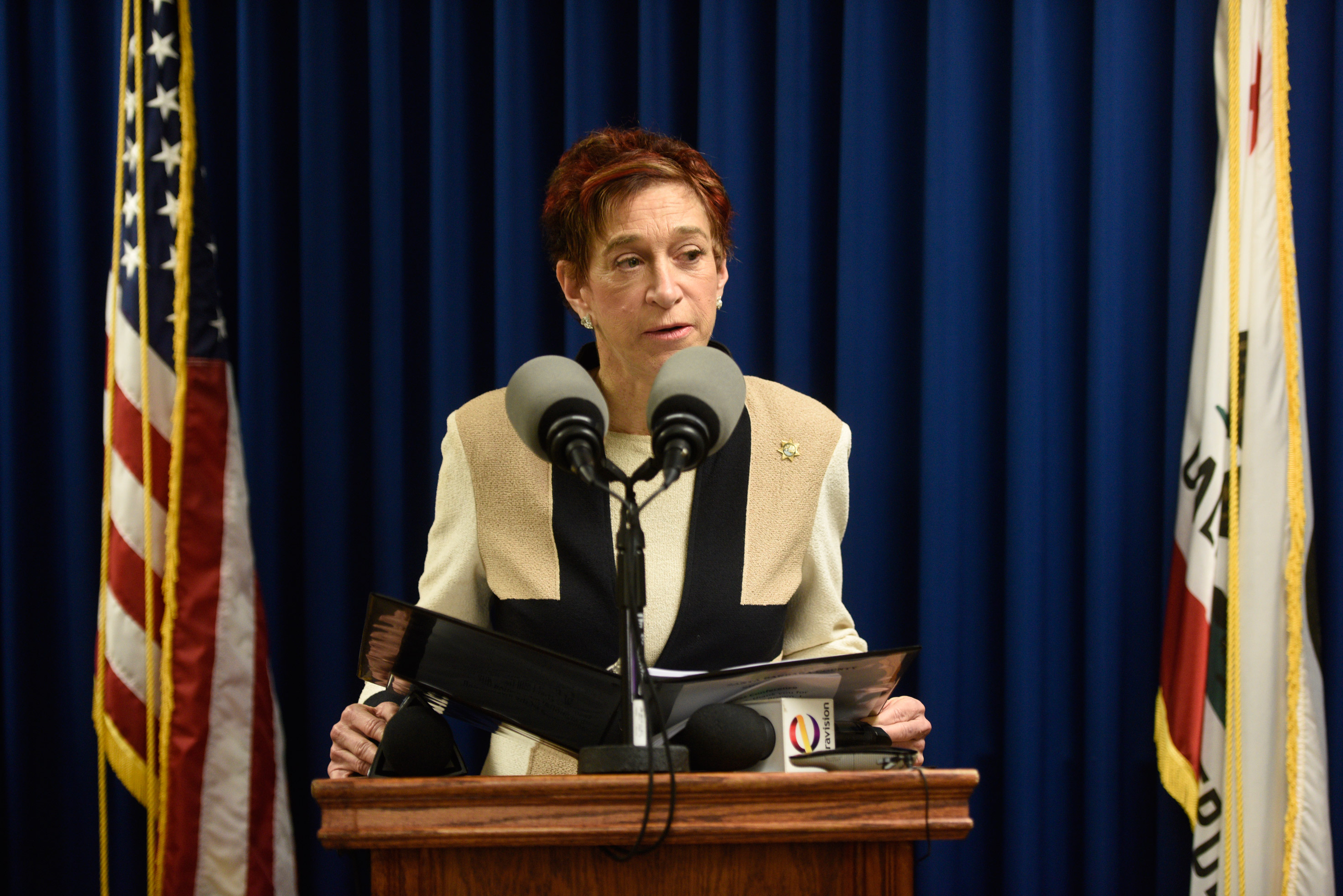
this case could be different.
Dudley said she’d reserve death penalty consideration for “the worst of the worst kinds of cases.” It seems possible that eight gunshots to the head of a 5-year girl might qualify. She would also need to determine the mental health and IQ of the accused. So far there has been no evidence presented that Haobsh is either insane or intellectually handicapped.
Based on Dudley’s past decisions, however, many in the legal trenches don’t believe she’ll pursue the death penalty against Haobsh. In 2012, she allowed Lee Leeds — who killed his father and three others in Santa Maria — to plead to a deal giving him life without possibility of parole. A Santa Maria jury rejected Leeds’s insanity defense even though he’d been diagnosed as a paranoid schizophrenic.
More recently, Dudley declined to file death penalty charges against any of the 16 members of Santa Maria’s MS-13 street gang now facing 10 alleged homicides. Under state law, all death penalty defendants are required to have two attorneys. The logistical challenges of accommodating so many attorneys in the same courtroom can be prohibitive. Dudley also declined to pursue death penalty charges against Victor Martinez, who beat 64-year-old Marilyn Pharis with a hammer after choking and raping her. In that case, Dudley explained that the victim’s relatives who strongly opposed capital punishment influenced her decision. In 2012, Dudley famously pulled the plug on a death penalty prosecution that had begun under the former prosecutor, Joshua Lynn, against Robert Ibarra for his role as an accomplice in the 2004 stabbing death of Elias Silva. In that case, Joshua Miracle admitted to stabbing Silva 48 times and testified repeatedly that he was solely responsible. As of this writing, he is the last person sent to death row from Santa Barbara County. After Dudley was elected, she met with Ibarra’s attorney, Steve Balash, who argued that Ibarra was too afraid of Miracle not to go along with the crime.
Typically, in such cases, Santa Barbara district attorneys don’t decide whether to pursue the death penalty until after the preliminary hearing. With the preliminary hearing concluded, the ball is now in Dudley’s court. Dudley’s policy is to meet with the defense counsel — “for as long as they need” — before rendering a judgement.
Coming out of Hill’s courtroom last Friday afternoon, defense attorney Voss made it clear she intended to meet with Dudley. What was her plan of action? “I need to let her know,” she said, “who Pierre Haobsh really is.”
That would be a start.



